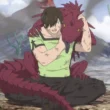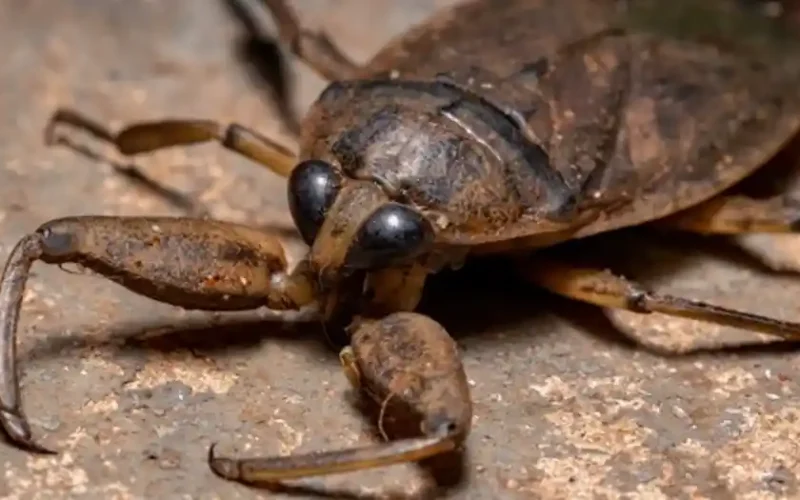Nature can be full of surprises–sometimes even scary ones! Especially when it comes to pests who’d like to try to settle down around, or directly into your home.
Whether you’re reading this out of morbid curiosity or you’ve recently had a scary encounter and want to learn ways to protect yourself, you’re in the right place. For we’ll go into detail about four of the scariest pests out there and why they invoke so much fear.
Read at your own discretion!
Bullet Ant
Most of us have spent a significant amount of time watching the Discovery channel or Animal Planet. Every now and then, we’ll see some brave explorer and animal lover discover a nest of said ants in a remote location where they shouldn’t be in the first place.
Then they’ll start telling us curious facts about its large mandibles or try to creep us out by pointing out that this ant looks like a wingless wasp.
And then they’ll explain where this ant’s name comes from.
Well, spoilers, the name comes from the sensation of being hit with a bullet when you get stung.
Yes, it actually holds the world record for the most painful sting by an insect. You can forget about your twelve kinds of wasps and African killer bees, or even scorpion stings.
But do you want to know what’s even scarier? The pain can last for up to 8 hours. That means a good part of your day will be spent in intense and prolonged agony. The sting itself is described as a painful, lasting, burning sensation.
The good news is that most of these ants live in Paraguay and Nicaragua. That means that if you live in the rest of the world, you should rest easy. And probably worry more about other, more common types of scary pests.
Botfly
This “thing” is something they make X-Files episodes about. Yes, you may have heard that it’s a parasite. You may even know that it lives in the Western Hemisphere. Or that it usually sticks to its chosen type of hosts.
However, most botflies wouldn’t mind switching up to other types, if their preferred choice isn’t available. Oh, and the cherry on top is that there are botfly species which target humans specifically. Yikes!
But that’s not all. Many of the botfly’s eggs will find their host through a mosquito bite. Yes, if some of those infected bloodsuckers feed you, the eggs will make their way into your body through the mosquito’s bite.
The rest, we leave to your imagination. Especially the removal process. Lastly, botflies live in Mexico, Central America, and any other warm tropical and subtropical countries. The best way to protect yourself, of course, is to skip visiting these countries, use an insect repellent.
And, of course, keep your fingers crossed.
Asian Giant Hornet
The Asian Giant Hornet is an invasive species who have recently invaded North America and the United Kingdom. This is unusual because these places are not their usual habitats.
Also known as the “murder hornet” and currently the record holder of being the largest wasp out there. The queens reach over 5cm in length, while the workers are somewhat smaller, between 4-5cm.
The scary thing about them is not only their size and appearance. They also feed on pollinators, especially bees. which can wreak havoc on the local ecosystem, farming, and gardening.
While their venom is less toxic than other wasp species, they can inject much more of it per sting. This is not only painful (as their sting is large enough to puncture the protective coating of beekeepers) but also dangerous to people who are allergic.
Normally, these wasps leave humans alone. The only exception is when they feel their nest threatened. In that case, they will attack you. Sometimes, they will even sting repeatedly.
What’s even worse is that they’ll chase you. In that situation, you shouldn’t fling your arms about. You should just run and try to hide in some sort of shelter where they can’t reach you.
The good news is if you live outside of Asia, their natural habitat, you won’t likely cross paths with them. However, if you do notice a nest, call a qualified pest control company near you, as well as the local authorities.
Termites
While they don’t look like much, the terrifying thing about them is what they can do to your home. You might even have a patio or a deck outside that they’d quickly turn into their own personal buffet.
The point is that they can quickly chew through your life’s savings. Especially if left unchecked. Now, that’s a scary thought.
Termites are also hard to fight off. However, if you contact qualified pest control specialists in time, not all is lost. It’s recommended that you schedule yearly termite inspections. That is if you want to ensure that these lovely little wood-loving creatures don’t cost you more than you can afford.
If losing your home wasn’t scary enough, you should hear the rest of it.
If termite infestations don’t seem like a big deal to you, you should learn how quickly they procreate. First off, every queen lives for about 15-20 years and lays an egg every 15 seconds.
Secondly, for every person on this Earth, there are 1000 pounds of this type of pest. Yes, you’ve read that right – that’s not 1000 termites, but 1000 pounds of them. Kinda makes you forget about what would happen to the Earth’s orbit if all Chinese people jumped simultaneously, right?
Lastly, termites are not friends of the planet. And not because they eat all the trees, no. It’s because they emit 150 million tons of methane gas every year.
Oh, and on top of that, termite numbers are only growing worldwide. All thanks to global warming, which helps them survive because of warmer winters worldwide. Yes, and that is why termites made the list and passed the criteria for top scariest pests with flying colours.
Conclusion
While the list of scary pests can go on and on, it’s recommended we stop somewhere. We hope you found what you were looking for.
Which is much more preferable to the alternative of any of these scary pests actually finding you.
Still, if you have any issues with any kind of pesky invaders, fear not and directly call your local qualified pest control services. They’ll be sure to give them a good scare. Stay safe and take care!







